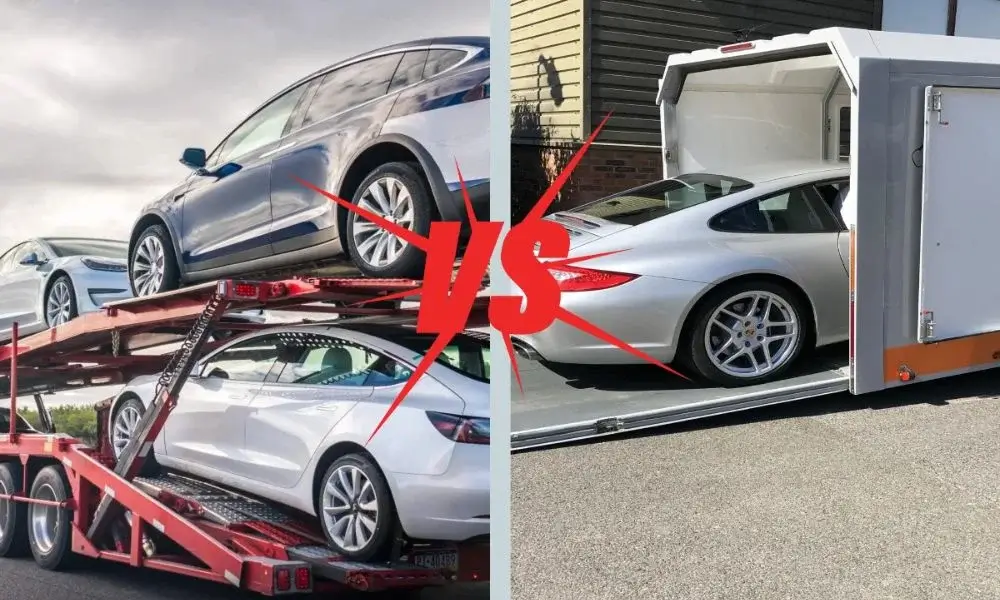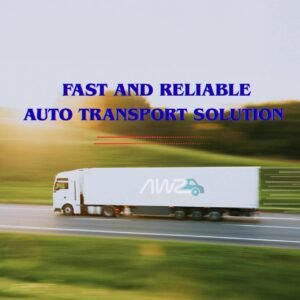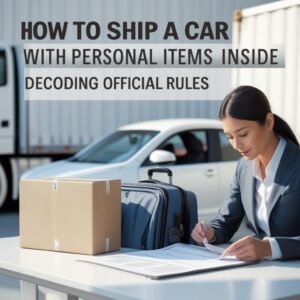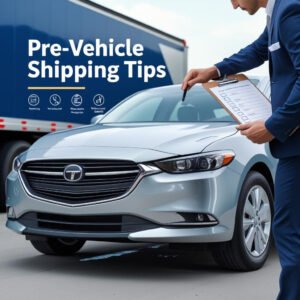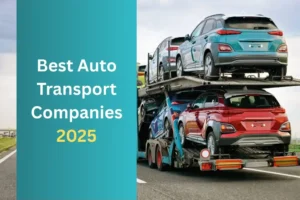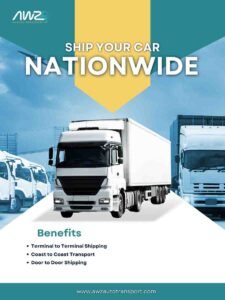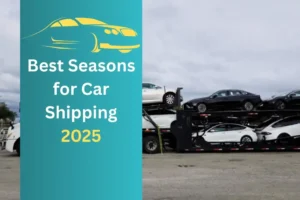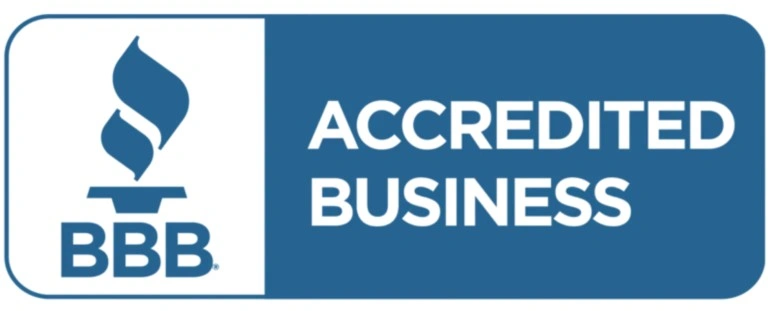Sponsored: Martin Luther
Enclosed vs Open Car Transport: What's Best for You
Shipping your car from state to state has many different options as enclosed carriers or open carries. If you are tight on budget, open car transport on a single or multi-layer carrier is a good option. However, you’ll compromise on protection and aesthetics as the vehicle is exposed to highway pollution and weather. If the budget is not an issue and you are looking for safe auto transport, choose enclosed car shipping. Enclosed carriers put your car inside a covered trailer, protecting it from weather and road debris. Make your decision wisely, based on your car’s value, budget, route, and other factors.
Whether you go for open or enclosed car shipping, AWZ Auto Transport is a reliable option. We hold years of experience in safe car transportation, making
What is the Difference Between Open and Closed Transport?
Both methods safely transport vehicles, but they offer different levels of protection and come at different price points.
| Feature | Open Transport | Enclosed Transport |
| Protection | Basic (exposed to weather) | Maximum (fully covered) |
| Cost | Lower price | Higher price (premium option) |
| Availability | Easy to book | Limited availability |
| Vehicles per trailer | Multiple cars (7-10) | Fewer Vehicles |
| Best for | Standard cars | Luxury/classic cars |
| Insurance | Standard coverage | Enhanced coverage |
What is Open Car Transport?
Open car transport is the most common way to ship cars across the United States. Your vehicle rides on an open trailer, just like new cars being delivered to dealerships.
How Open Transport Works?
When you book open transport, your car will ride on those large two-level trailers you see on highways carrying multiple vehicles. The driver uses hydraulic ramps to position your car on either the top or bottom level, then secures it with heavy-duty chains and straps. You’ll likely share the trailer with 7-10 other vehicles, and the driver will make several stops to pick up and deliver cars along the route. Don’t worry about your car rolling around – these trailers are specifically designed with individual parking spots and professional tie-down systems.
Pros
You’ll save money on shipping costs: Open transport costs much less because the carrier splits fuel and labor costs among multiple vehicles on each trip. If you’re shipping a regular car and want to keep costs down, this is your best bet.
You can book quickly when you need to ship: Most carriers offer open transport, so you won’t struggle to find available spots. Need to ship next week? You’ll likely find a carrier without much trouble.
You’re choosing a proven method: Millions of cars ship this way every year with minimal problems. Even new cars from dealerships use open transport, so you’re not taking a big risk with your vehicle.
Your car will likely arrive faster: Since there are more open carriers on the road, drivers can maintain regular schedules and aren’t waiting around for specialty bookings.
You get the same treatment as new car shipments: Dealerships trust open transport for brand-new vehicles worth tens of thousands of dollars.
Cons
Your car will be exposed to weather: Rain, snow, sun, and road dust will hit your vehicle during transport. While this rarely causes damage, your car might arrive dusty and need a wash.
Flying debris could cause small damage: Rocks kicked up by other vehicles or the carrier itself might chip your paint or windshield, though carriers take routes to minimize this risk.
Your car is visible to everyone: Since anyone can see the vehicles on an open trailer, there’s a slightly higher chance of theft during overnight stops, though carriers use secure lots.
No protection from temperature extremes: If you’re shipping during a heat wave or cold snap, your car’s interior will experience those conditions, which could affect leather or other sensitive materials.
What is Enclosed Car Transport?
Enclosed car transport puts your vehicle inside a covered trailer, offering maximum protection during shipping.
How Enclosed Transport Works?
When you choose enclosed transport, your car goes inside a covered trailer that looks like a moving truck or large box trailer. These carriers only hold 2-7 vehicles, giving your car more space and individual attention. The driver loads your vehicle using hydraulic lift gates or special ramps, which is perfect if you have a low sports car that might scrape on regular ramps. Your car stays completely hidden and protected inside the trailer from pickup to delivery.
Pros
Your car stays pristine during transport: No rain, snow, sun damage, or road grime will touch your vehicle. You’ll receive it in exactly the same condition you handed it over.
Nobody can see or access your valuable car: Since your vehicle is hidden inside the trailer, thieves can’t even know it’s there, making theft virtually impossible during stops.
You get white-glove treatment for your investment: Enclosed carriers specialize in high-value vehicles, so drivers have more experience handling expensive, classic, or modified cars with extra care.
You’re covered by higher insurance limits: If something does go wrong, enclosed carriers typically carry much higher insurance coverage to protect valuable vehicles.
Your low car won’t get damaged during loading: Those hydraulic lift gates mean your sports car, lowered vehicle, or classic car won’t scrape its undercarriage getting on and off the trailer.
You avoid weather-related damage: No UV fading of your interior, no hail damage, no salt corrosion in winter – your car travels in a controlled environment.
Cons
You’ll pay significantly more for the service: Since fewer cars share the transport costs and the equipment is more expensive, expect to pay much more than open transport.
You might wait weeks to find an available carrier: Fewer companies offer enclosed transport, especially to smaller cities, so you’ll need to plan ahead and be flexible with dates.
You may need to meet the carrier partway: In rural areas, you might need to drive to a larger city to meet the enclosed carrier since they don’t service every location.
You’re paying for protection you might not need: If you have a regular daily driver, the extra protection probably isn’t worth the significant cost increase.
Making Your Decision: Key Factors to Consider
Choose the transport method that best matches your vehicle’s value, your budget, and your protection needs.
Vehicle Value and Type
For everyday cars and standard vehicles, open transport usually provides adequate protection at a reasonable price. Consider enclosed auto transport for luxury cars, classic vehicles, exotic sports cars, or any car with special sentimental or financial value.
Budget Considerations
Open transport offers the best value for most situations. Choose enclosed delivery when the extra cost is justified by your vehicle’s value or when maximum protection is worth the premium to you.
Timeline and Flexibility
If you need quick pickup or have flexible dates, open auto transport offers more options. Choose enclosed transport when you can plan ahead and book in advance for better availability.
Risk Tolerance
Consider how you’d feel if minor damage occurred during transport. Open transport has low damage rates, but enclosed shipping virtually eliminates weather and debris risks.
Distance and Route
For long-distance shipping or routes through harsh weather areas, enclosed transport provides extra peace of mind. Short distances with good weather may not require the additional protection.
Conclusion
The major differences between open and closed auto delivery are safety, cost, and procedure. Enclosed carrier transport offers secure delivery in fully protected and covered haulers. The premium treatment and reliability justify the high price tag. For budget-friendly transport, open car shipping is an option that handles multiple vehicles in open carriers at once. Decide between the two based on your personal preferences. Even if you go for a budget-friendly option, a reliable car transport service will ensure minimal exposure to damage.
